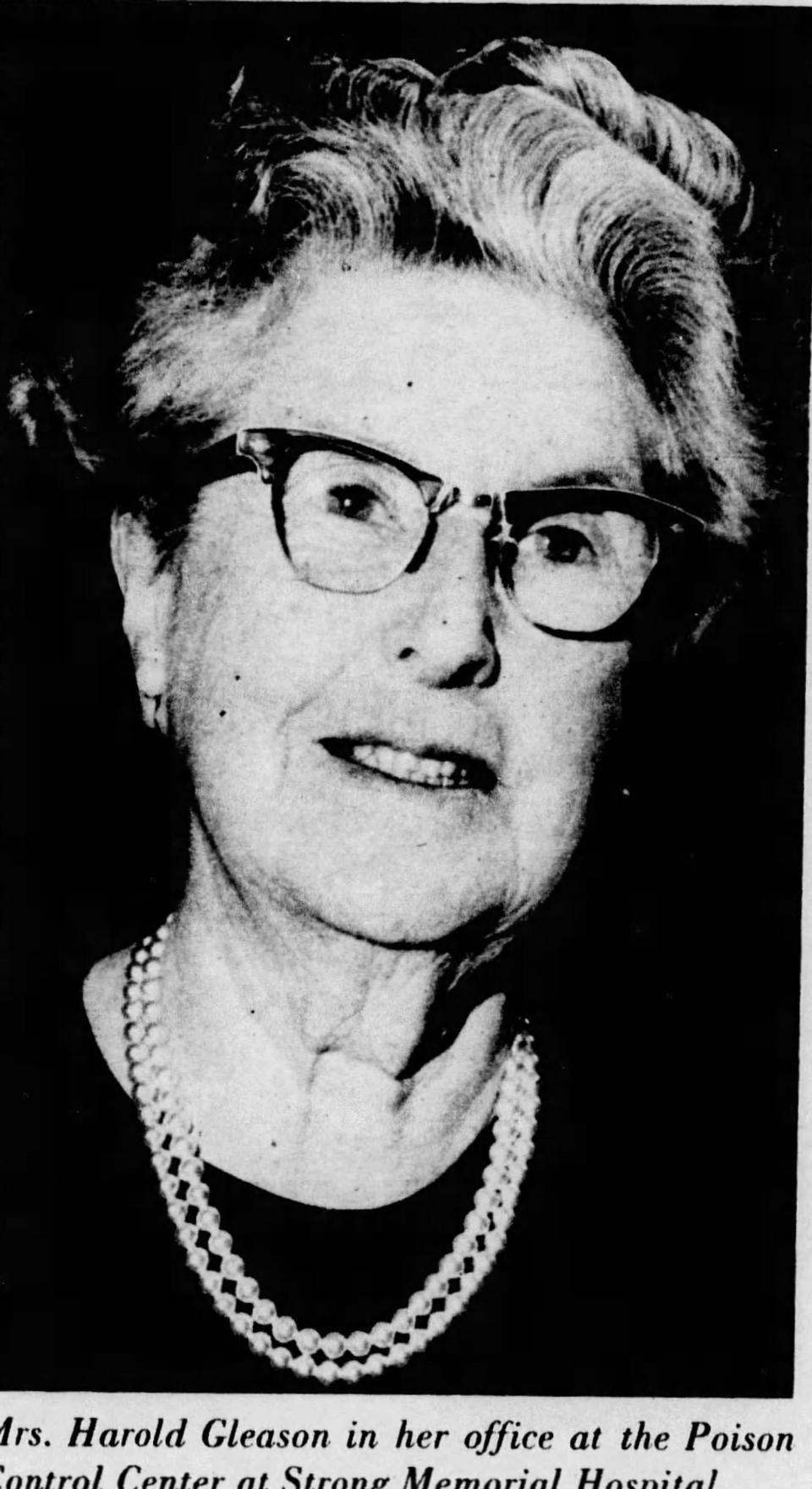Rochester renaissance woman who lived to be 101 filmed first home movie with Kodak
- Oops!Something went wrong.Please try again later.
In 1977, Marion Norris Gleason of Rochester was worried that she was running out of time to do all the things she wanted to do.
“Don’t get old,” the 84-year-old told the Democrat & Chronicle’s Betty Utterback, before lamenting all that she hadn’t done or would like to do again.
Certainly, Gleason, who would die in 1991 at age 101, could have rested on her laurels.

It was as if Gleason lived two, three or more lives, more than enough to earn a spot on this column’s list of Remarkable Rochesterians. (Thanks to her granddaughter Mary Gleason for calling her to my attention.)
Marion Gleason was a pioneering filmmaker, and she was a writer, a mother of four, and a confidant of George Eastman, the most guarded of men.
All of that is remarkable enough, but in a surprising career shift, she became a widely recognized expert on the poisons in household products.
Married in 1915, Gleason came to Rochester in 1919 when her then-husband, Harold Gleason, accepted a job as the organist at George Eastman’s mansion on East Avenue in Rochester. Harold would also establish the organ department at what became the University of Rochester’s Eastman School of Music.
Marion Gleason was soon part of “The Lobster Quartet,” four wives of Kodak employees whom Eastman invited to weekly luncheons (often with lobster served) at his mansion.
In the 13 years before Eastman’s death by suicide in 1932, Gleason had many conversations with Rochester’s most powerful industrialist, some of which she recalled in a 1971 essay in the University of Rochester Library Bulletin.
Remarkable Rochesterians: Remembering an Irondequoit woman who spread the word on crosswords
Gleason is candid, and Eastman emerges as a complicated man, someone who could be hardhearted or softhearted, depending on the circumstances.
Given her Kodak connections, Gleason was recruited by the company in 1921 to film what is thought to be the first home movie.
“They wanted someone who knew absolutely nothing about movies so they could be sure that anyone at all could load the camera,” Gleason told the Democrat and Chronicle in 1968. “Despite the fact that I was scared stiff, and it was difficult to crank the camera because it rattled and made noise, the picture was a wow.”
Titled “The Picnic Party,” the film features Gleason’s 10-month-old son, Charles, at a birthday party. He and another boy eat marshmallows and throw mud. Cats and dogs have a part.
The film worked to show the world that anyone with a camera could make a movie.
Gleason would go on to make more movies, including, in 1927, the commercial film “Fly Low Jack and the Game,” which was shown around the country. Later, she would write a book, “Scenario Writing and Producing for the Amateur.”
As noted in a 2003 article in the journal “Film History” by Dwight Swanson, Gleason moved on to other interests in the 1930s, including writing radio dramas for WHAM radio. In 1942, she became the first director of public relations at Strong Memorial Hospital.
After a few years, she became interested in toxicology, an interest that led to appointment in 1948 as a research assistant in UR medical school’s Department of Pharmacology and Toxicology.
“Poor Dr. Hodge,” she said of Harold Hodge, the department’s chair. “He had to convince people I was qualified. I had no degree and had never taken a science course. Then I remembered I’d written a couple books. I think that helped.”
Gleason would become one of the lead authors of “Clinical Toxicology of Commercial Products, Acute Poisoning (Home & Farm).” The 1,500-page book listed thousands of products and their ingredients and was of use in poison control centers worldwide.
For her contributions, the University of Rochester awarded Gleason an honorary degree in 1962, a well-deserved recognition of multi-talented woman who, seemingly, could do it all.
Remarkable Rochesterian
For her varied accomplishments, let’s add the name of this filmmaker and scientist to the list of Remarkable Rochesterians that can be found at: https://data.democratandchronicle.com/remarkable-rochesterians/.
Marion Norris Gleason (1890-1991): A New Jersey native, she came to Rochester in 1919 with her husband, Harold Gleason, who had been hired to play the pipe organ in the home George Eastman, founder of the Eastman Kodak Co. She was one of four women who had lunch with Eastman weekly, and she was recruited by Kodak to film what is thought to be the first home movie. She made more films and wrote about film-making; then she worked in radio, and later became public relations director at Strong Memorial Hospital, before becoming a research associate in toxicology at the UR Medical School, where she was a key author in a widely used reference book on poisons in household products. In 1962, she received an honorary degree from the University of Rochester.
From his home in Geneseo, Livingston County, retired senior editor Jim Memmott, writes Remarkable Rochester, who we were, who we are. He can be reached at jmemmott@gannett.com or write Box 274, Geneseo, NY 14454.
This article originally appeared on Rochester Democrat and Chronicle: Rochester woman who lived to be 101 filmed first home movie with Kodak

